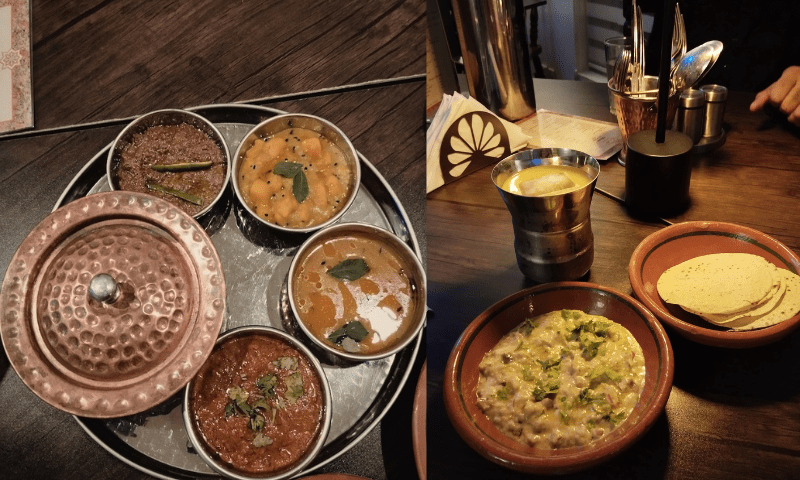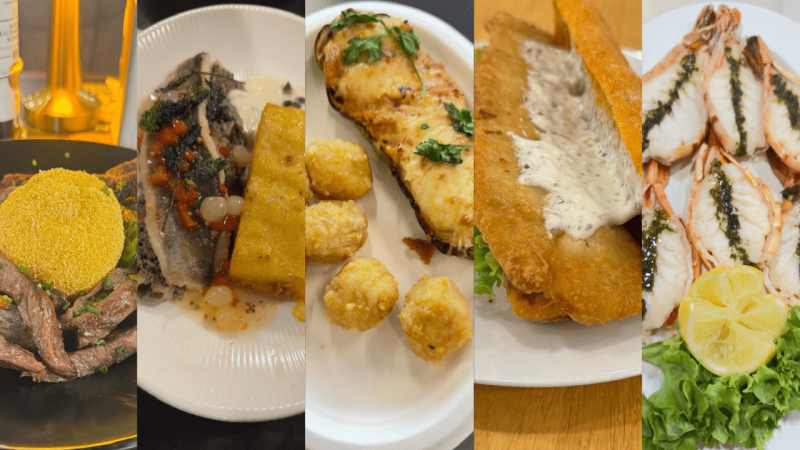This glazed baked chicken will be the star of your dinner party
Last autumn, I invited 15 friends over for dinner to my home in New York, with no menu in mind. I love the idea of spending a week and a half leisurely working on a menu ahead of a party.
However, things usually don’t work out that way — I’m typically scrambling a few days before, putting together a list of dishes and shopping for ingredients. But despite the short time I leave myself to prepare food, my cooking is usually quite successful and friends leave satiated, often taking home a doggy bag.
For my autumn party, I decided to bake a glazed chicken to accompany my Jamaican chickpea curry, Chinese noodles with shrimp, Italian focaccia bread and dumplings. My guests were going to bring an assortment of appetisers, salads and for dessert we had home-baked chocolate cake and ice cream.
Since I had never baked a glazed chicken before, I hit the internet for knowledge, wisdom, recipes and history. Surfing led me to a number of recipes and interesting information on the topic of glazed chicken.
The modern chicken used for baking, I learned, is a descendant of the red jungle fowl which was domesticated in the northern parts of India some 4,000 years ago. Not only did people bake this chicken, they also grilled or fried it. Today, this bird is used globally as a source of meat and eggs.

At about the same time — that is 4,000 years ago — to bake chicken and other meats, Egyptians used Nile clay to build large brick ovens, which were later perfected in Naples, Italy. A structure divided into two parts was built; the upper held food and the lower, wood for fire.
This oven was a luxury that only few possessed. Baking chicken was considered healthy, as little or no oil was used and the bird cooked in its own juices, while preserving all the nutrients. And, if cooked at the right temperature, the meat was succulent and tender. An important aspect of this kind of baking was that people congregated around the oven to socialise and eat together. This is depicted in the pictures drawn on Egyptian tombstones.
We see people gathered together sharing a meal, hunting for food and a myriad of other activities. Among ancient civilisations, Egyptians’ culinary habits are considered the healthiest.
In ancient times, people also used ‘earth’ ovens to bake chicken and other meats, and, much like the Egyptians, gathered around to share a meal. These ovens, which were pits, typically underground, trapped heat to bake, grill and steam.
In Africa, Asia and in the Americas, these cookers had many names: tandoor, tandir, umu, lovo, koua, mumu and a host of other monikers. When archaeologists look for signs of ancient human settlement, it is these antiquated pits that help prove their existence.
And finally the glaze for the chicken. Through a number of recipes and their history, I learned that in the 19th century, the famous French chef Auguste Escoffier listed the glaze (glace de viande) as a sauce derived from the sauce veloute. Veloute is one of the five ‘mother sauces’ of French cuisine, the other four being bechamel, hollandaise, espagnole, and tomato.
The glaze is made by reducing the stock of meat until it is very thick and glossy, and can be applied to the meat before and during the bake. You can add herbs, spices, and other thickening sauces to the glaze if you like.
This baked bird will come out succulent and tender from the inside and golden, glossy and crisp on the outside
My party reminded me of the way Egyptians and people from other cultures got together to share a meal in ancient times. My kitchen was swarmed with friends enjoying themselves. The chicken, when out of the oven, had a lovely golden gloss and was tender and succulent.
I’m sure that you’re now waiting anxiously for the recipe to bake your very own chicken.
Glazed Baked Chicken
Ingredients
For the Marinade
- Thimble size ginger
- 10 cloves of garlic
- 2-3 tablespoons of white vinegar
- 1 teaspoon of paprika
- A tablespoon of olive oil
- Half or 3 quarter teaspoons of salt
- Whole lemon cut into thin slices
- Crushed bell pepper
- Fresh herbs of your choice
For the Glaze
- 1 cup of stock of any meat or vegetables
- 3 tablespoons of honey
- 1 tablespoon of mustard
- 2 tablespoons of Korean BBQ sauce — if not available, use any other thick sauce
- 1 tablespoon of rice/apple cider vinegar
- 1 tablespoon of soy sauce
- Juice of half lemon
Method
Chicken
Clean out the stomach and remove skin so marinade can penetrate deeper. Poke many holes in the chicken with either a knife or fork.
Marinade
Crush ginger and garlic cloves with a pestle and mortar, and add white vinegar, olive oil, paprika and salt to it. Rub the marinade, preferably with your fingers, into the chicken including the inside of the stomach area. Stuff the stomach with herbs, crushed bell peppers and lemon slices; some squeezed into the belly and some left unsqueezed.
Leave for 23 hours in the fridge, but flip the chicken over every five to six hours.
Glaze
In a small pot, combine stock with honey, mustard, rice vinegar/apple cider vinegar, juice of lemon and soy sauce. Stir continuously and cook this until thick and leave to cool. It should not be runny or it won’t stick to the chicken.
Baking
Bring the chicken out of the fridge after 23 hours and leave for one hour at room temperature before baking. Preheat oven to 400 degrees. Remove the marinade the chicken is sitting in, and add to the glaze and heat glaze again until thick. Stir all the while.
If it crystallises, add a little water, and heat yet again and stir until soft. Put chicken, breast up, into a greased baking tray. Apply a quarter of the glaze to it with a basting brush and place chicken into the oven for 30 minutes. Remove chicken, flip over and apply another quarter of the glaze to the back of the chicken, and place back into oven for 20 minutes.
Remove chicken again and evenly apply the rest of the glaze onto the back and other visible areas. Put chicken back into the oven for 10-15 minutes. When the glaze, on the floor of the baking tray, starts to sizzle and is somewhat charred, it is time to take the chicken out of the oven and enjoy.g
The writer is an entrepreneur based in the US and interested in travelling, painting, creative writing and food
Originally published in Dawn, EOS, February 2nd, 2020














Comments